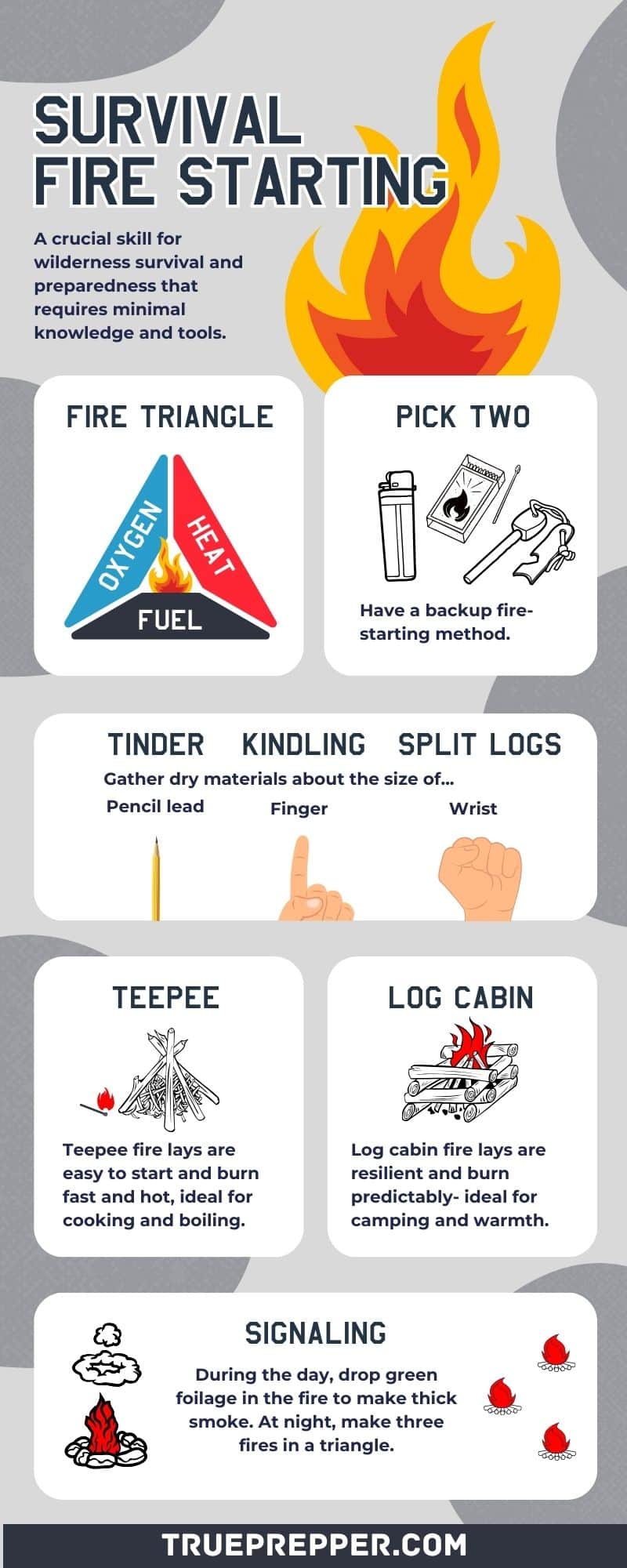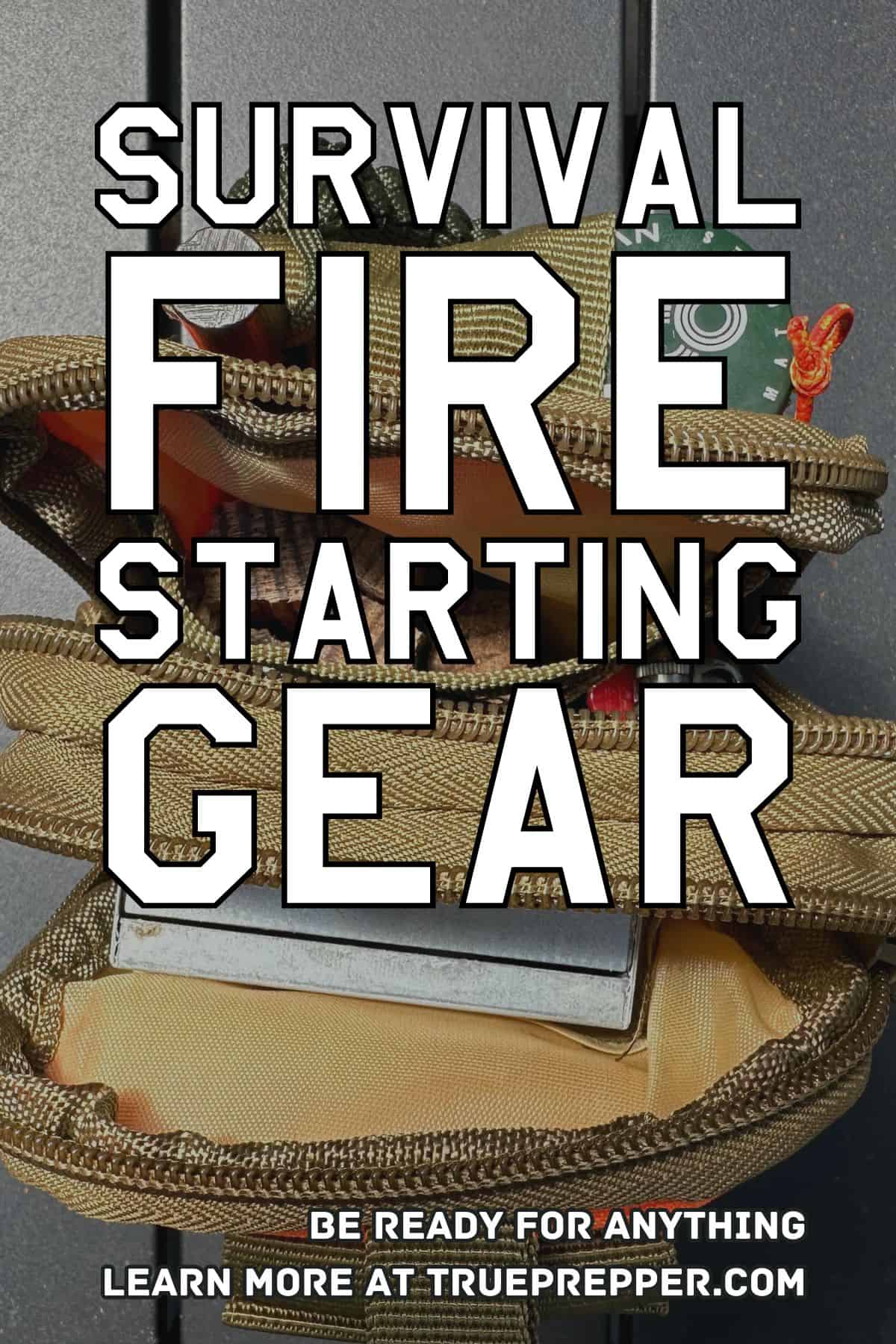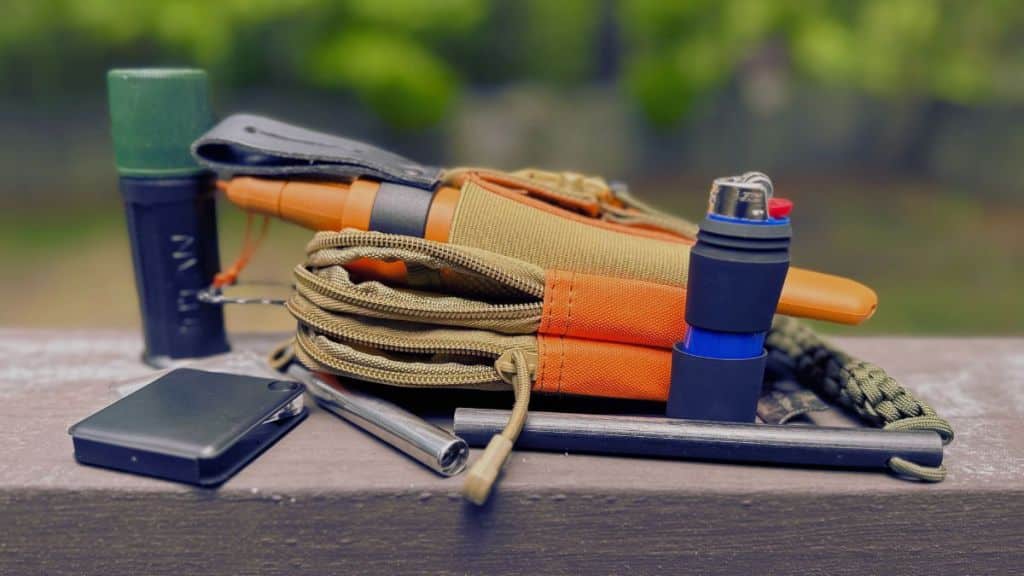
Fire is a crucial element in survival scenarios, enabling humans to thrive in various environments. Its versatility allows for cooking, water purification, warmth, and signaling. To harness the power of fire effectively, having the right gear is essential. Here's a comprehensive guide on survival fire starting gear and techniques.
Bug Out Bag Fire Kit
A bug out bag fire kit is a compact collection of tools designed to help you start a fire quickly and efficiently. In survival situations, where weight is a critical factor, having a well-equipped fire kit can make a significant difference. Here are some essential items for your bug out bag fire kit:
- Lighters: A reliable survival lighter is a must-have for any fire kit. Look for durable options that offer good value.
- Matches: Stormproof matches are preferred for their reliability in various conditions, including underwater.
- Ferro rods: These rods provide thousands of lights and are a dependable fire-starting tool.
- Tinder: Natural or manmade tinder options are vital for igniting fires. Having suitable tinder can be a lifesaver.
Optional gear for fire starting includes a magnifying glass, fire piston, char cloth, pocket bellows, folding wood stove, and emergency candles.
The Fire Triangle
The fire triangle is a fundamental concept that illustrates the three essential components required to ignite and sustain a fire: fuel, heat, and oxygen. Understanding this triangle is crucial for effective fire starting and management.
Fuel
Fuel is any combustible material that sustains a fire. It includes a wide range of substances such as logs, paper, gasoline, and natural gas.
Heat
Heat is the energy source that raises the temperature of fuel to its ignition point. Various methods like flames, electrical sparks, friction, and chemical reactions can provide the necessary heat for ignition.

Oxygen
Oxygen is a vital component of the fire triangle, facilitating the combustion process by combining with fuel to produce heat and flame. Smothering a fire by removing oxygen can extinguish it.
Fire Starting Methods
There are numerous methods for starting a fire, ranging from common to unconventional techniques. Understanding and practicing these methods can be crucial in survival situations. Here are some common and alternative fire-starting methods:
Common Methods
- Lighters
- Matches
- Ferro rod or flint striker
Alternative Methods
Exploring unconventional fire-starting methods can enhance your survival skills. Check out our detailed guide on 23 ways to start a fire without matches or a lighter for more options.
Finding Fire Sources for Survival
Resourcefulness is key in survival scenarios. Knowing where to find fire sources, such as eyeglasses, batteries, and push buttons, can be invaluable in challenging situations.
Tinder, Kindling, & Logs
Understanding the roles of tinder, kindling, and logs in fire building is essential for creating sustainable and efficient fires. Here's a breakdown of these fuel components:
Tinder
Tinder is the easily ignitable material used to start a fire. It can be natural, like dried grass or pine needles, or manufactured, such as petroleum jelly-soaked cotton balls.

Kindling
Kindling consists of small sticks that bridge the gap between tinder and larger logs. It helps sustain the initial flames and facilitates the transition to larger fuel sources.
Logs
Logs are the primary long-term fuel source for fires. Understanding the properties of different wood types, such as hardwoods and softwoods, can aid in fire crafting.
Building a Fire
Mastering different fire lay techniques, like teepee, cross-stack, and lean-to, provides versatility in fire building. Each method serves specific purposes and can be adapted to various environments.
The Teepee
The teepee fire lay is easy to build and ideal for quick-starting fires. It creates a strong flame that can ignite larger fuel sources efficiently.
The Cross-Stack
The cross-stack fire lay is excellent for long-burning fires. It allows for controlled burn times and is suitable for generating sustained warmth in campfire settings.
The Lean-To
The lean-to fire lay is effective in open and windy conditions. It utilizes large logs as a windscreen to protect the fire and sustain combustion.
How to Start a Campfire
Starting and managing a campfire safely requires proper fuel preparation and fire building techniques. Following a few key steps can help you create and maintain a campfire effectively.
Fire Safety
Fire safety is paramount when dealing with fire tools. Understanding fire rules and regulations, practicing personal safety measures, and adhering to fire safety guidelines are essential to prevent accidents and ensure responsible fire management.
Fire Rules and Regulations
Adhering to fire bans, practicing Leave No Trace principles, and following safety protocols can mitigate fire-related risks and promote responsible fire usage.
Personal Safety
Prioritizing personal safety and that of others when handling fire tools is crucial. Taking precautions, using protective gear, and being vigilant can prevent accidents and promote safe fire practices.
—————————————————————————————————————————————————————————————–
By: Sean Gold
Title: Essential Gear for Starting a Survival Fire
Sourced From: trueprepper.com/survival-fire-starting-gear/
Published Date: Thu, 23 May 2024 10:52:56 +0000


